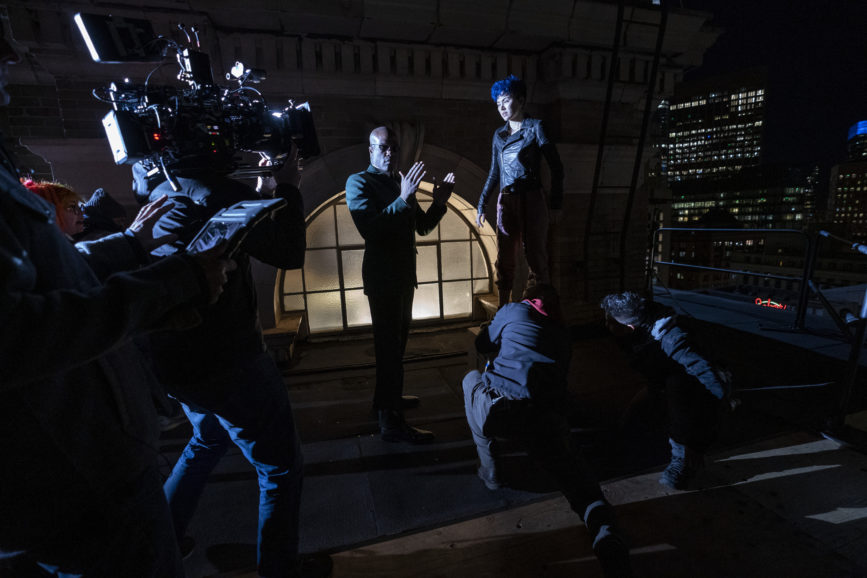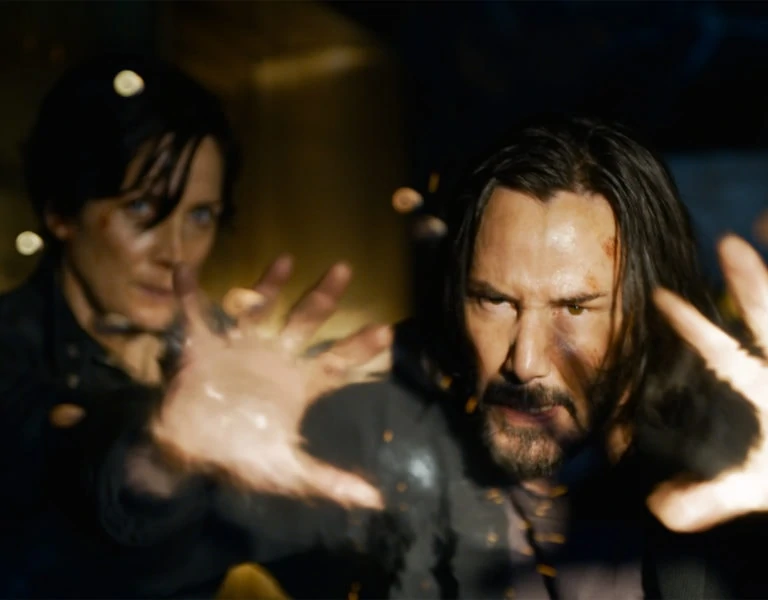ANOTHER DIMENSION
Released in the middle of the latest COVID maelstrom, while proving to be a draw for at-home viewers with its concurrent release on HBO Max, the fourth – and perhaps, final – Matrix film reveals surprises both in terms of content, and how it was made.
The Matrix Resurrections takes the story into surprisingly “meta” territory, as it comments on itself, including, as a recent online Den of Geek commentary noted “a painful re-enactment of studio branding and synergy.” There’s also an almost Thomas Wolfe-ian questioning of whether you can, indeed, go home again, particularly in its first act, as Keanu Reeves’ “Thomas Anderson” moves through a current reality where only the dimmest Neo-sparked memories flicker through.
But of course, being a Matrix movie, you can’t keep suppressed realities suppressed forever.
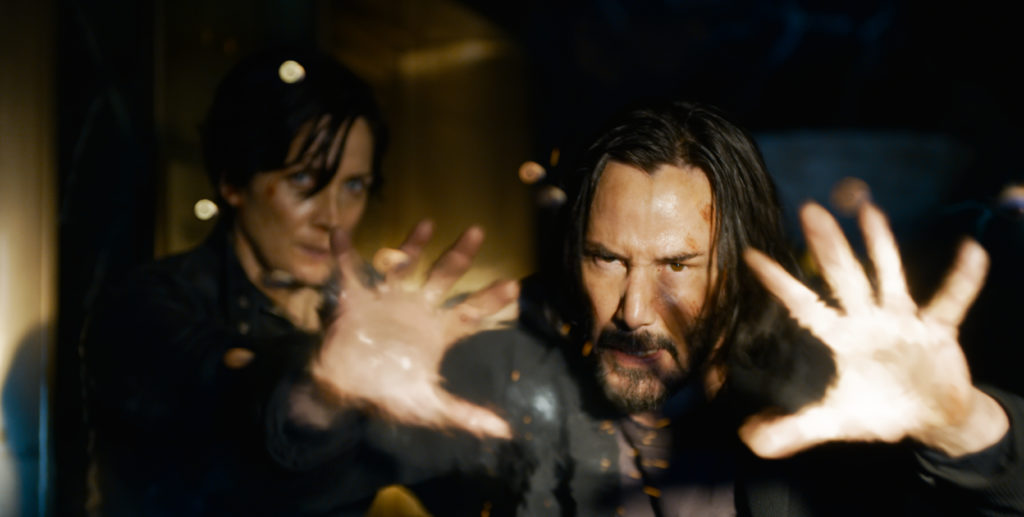
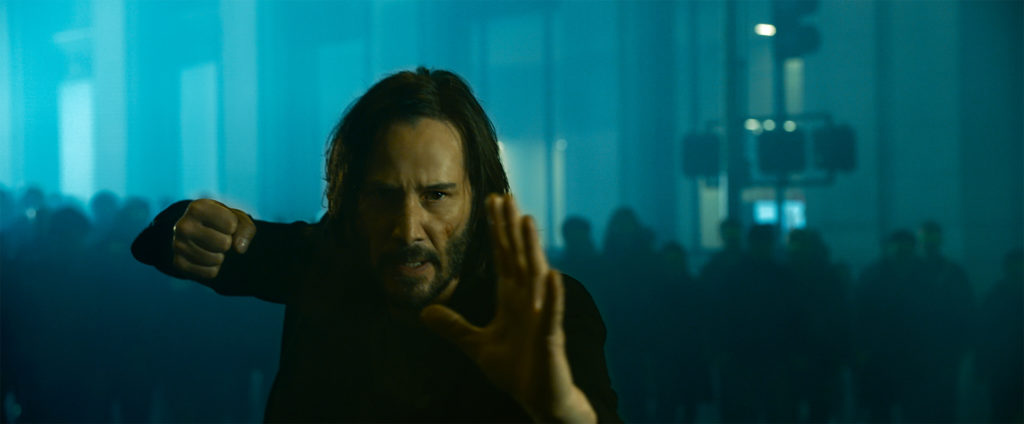
Login to continue reading
This content is exclusively for digital magazine subscribers.
Start your subscription today, or login below to continue.
Decisions about going home, however, or more specifically, staying there, also affected the film’s cinematography credits, being directly responsible for the fact that two are listed: John Toll ASC, who was tapped to shoot the whole thing, and Daniele Massaccesi, originally planning to operate for Toll.
Then COVID hit – the first time.
Toll, in addition to being an Oscar winner, was also a veteran of previous Wachowski Sister projects, having shot Cloud Atlas as well as their Netflix series Sense8. He’d even started the film in San Francisco, in January of 2020, where most of the first and third acts are set. “Then,” as Massaccesi recounts, “we traveled to Berlin to finish the schedule – and then COVID started. And then, in May, we started organising the movie again – but John decided not to finish it.”
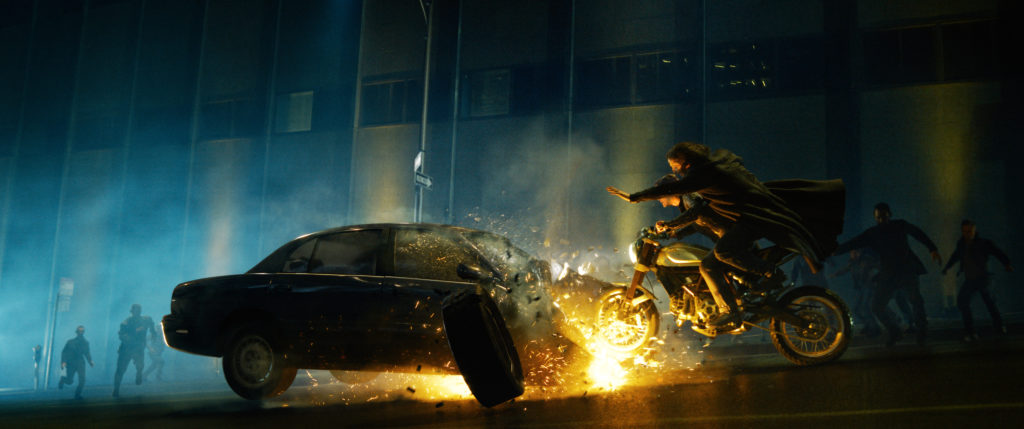
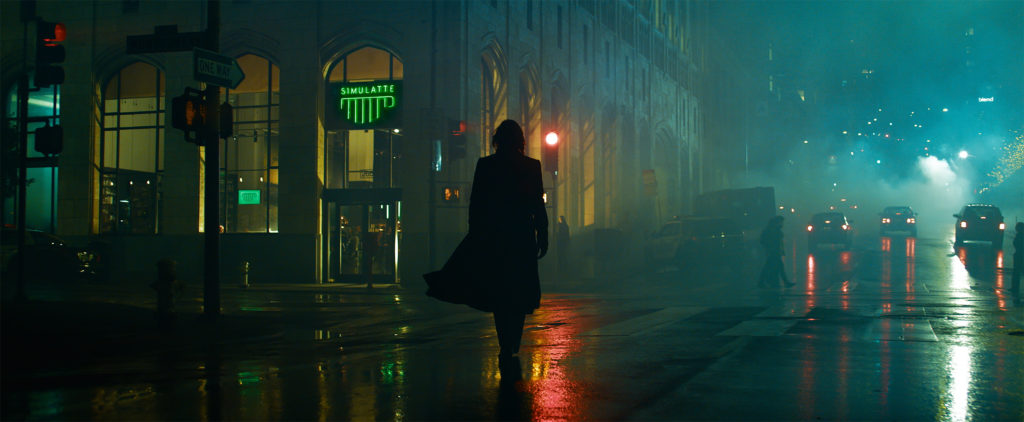
Massacessi was similarly a Wachowski veteran, having operated under Toll for the aforementioned projects, and also Jupiter Ascending, in addition to working on the sisters’ earlier, and perhaps underrated, adaptation of Speed Racer. In addition to the alumni angle, he came with a sterling reputation as an operator, to the point where, after finishing House of Gucci, Ridley Scott pointed at him, insisting he return in the same capacity for the director’s next production, the Joaquin Phoenix-starring Napoleon opus, Kitbag.
Thus, it was perhaps no surprise when director Lana Wachowski, undertaking a Matrix installment for the first time without her sibling, asked “what about if Daniele finishes it?”
Which proved to be a rather seamless solution, resulting in both fairly effortless continuity for the film, and two credited DPs in the titles. “At the beginning,” Massacessi asked himself “will I be able to do it?” The answer turned out to be a fairly emphatic “yes.” “Most of the time,” he says, “I was pretty much ready. I only needed to do small adjustments.”
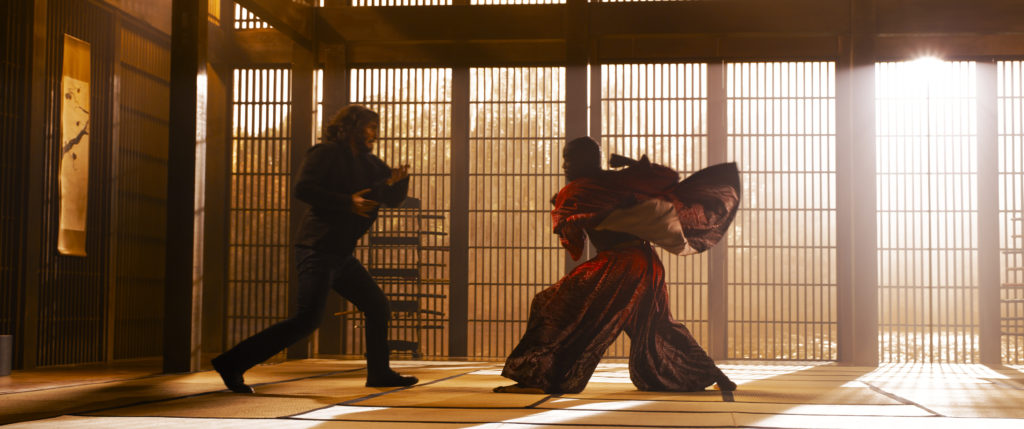
Small adjustments or not, it all kept Massaccesi quite busy, as he also kept operating. And there were a lot more Berlin days (71) than San Francisco ones (17), where he had to wear both hats. Or in this case, both operator and DP gear on his back.
This involved a digital-era update on a kind of Altman or Cassavetes-like spontaneity. Not in terms of adlibbed lines, but camera and character movements. Massaccesi wore a vest, which had not only an iPad strapped to its back, but “a zoom control, so (the director) could adjust the zoom on the fly.”
Wachowski followed “behind me, looking at the monitor, whispering in my ear,” as he kept moving with a Steadicam, unless they paused “for close-ups and things.”
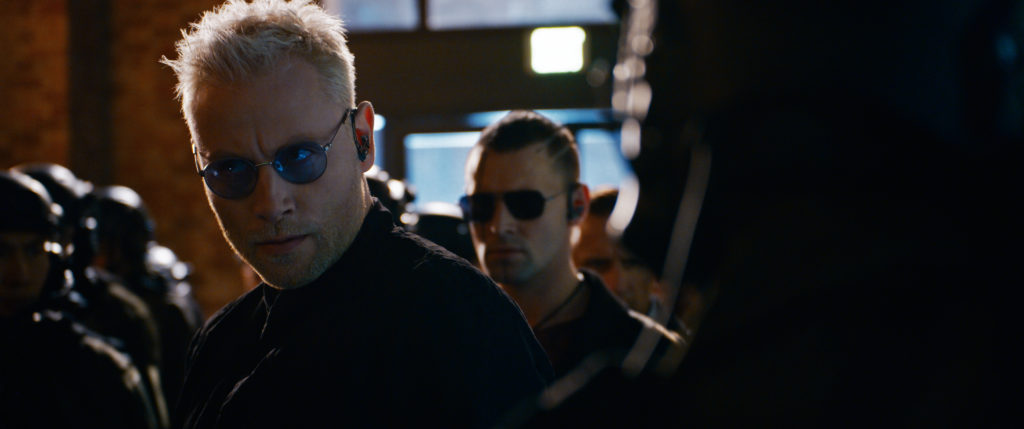
It was all part of what Wachowski described to him as “a different approach” to her directing style, further refined when they arrived in Berlin to find sets still unfinished, “and we were going to start filming in two weeks. But then three days after we got there, we shut down.”
During that pause, “I had a little talk with John, about what the idea was,” and when they started up again that May, he found “the new schematic is different from the (previous)one,” both in terms of how they were originally going to approach the film with Toll as DP, and in contrast to earlier Matrix installments.
He is also quick to thank production designers Hugh Bateup and Peter Walpole, as the pause gave him a chance to look at “plans for the set,” and be walked through them as they were finished, so he could ask “what if we had light there? Some practicals there?”
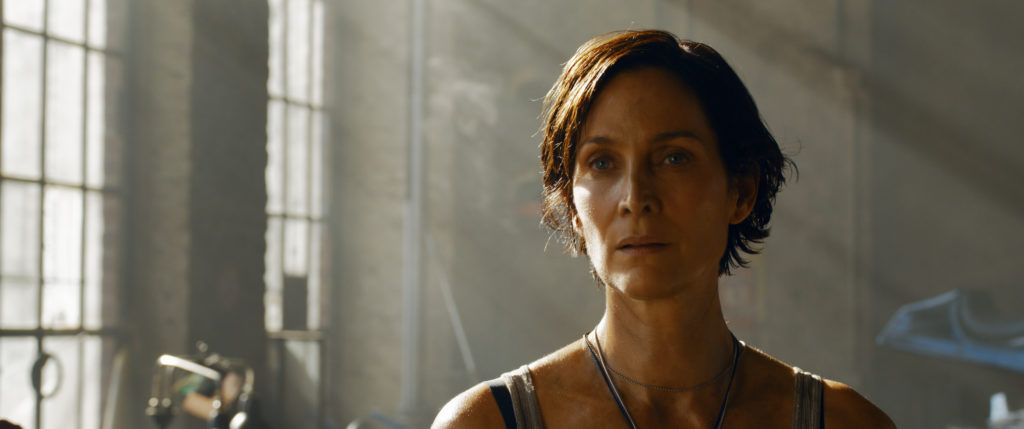
The gear was “mostly LEDs – (we had some) practical electricians, that help us boost some lights,” though he was also quite fond of using SUMOLIGHT, which is made in Germany. “They’re hybrids,” he notes, and “go from tungsten to daylight. We used them quite a lot, to light the screen and a lot of the sets. They’re not as heavy as Skypanels,” and a lens in front of the LEDs allowed fairly easy shifts from wide lights to more focused spots.
In fact, he views cutting-edge lighting gear as more dynamic than camera engineering now, as the latter has settled into consistent reliability across brands and platforms. But with still-evolving illumination technology, “you can change colour, you can remote control them, you can do so many things.”
Wachowski, meanwhile, was also contemplating changes, and “a different approach” to directing, compared to how she’d done it before. Massaccesi found that discovering shots on the fly was ultimately “a very efficient way of filming – we were able to catch everything we wanted. Because Lana was on set, she was able to adjust.”
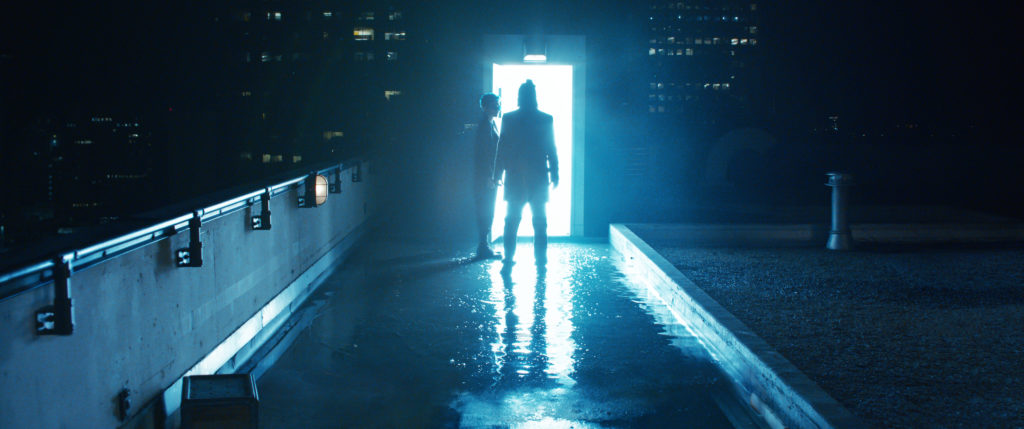
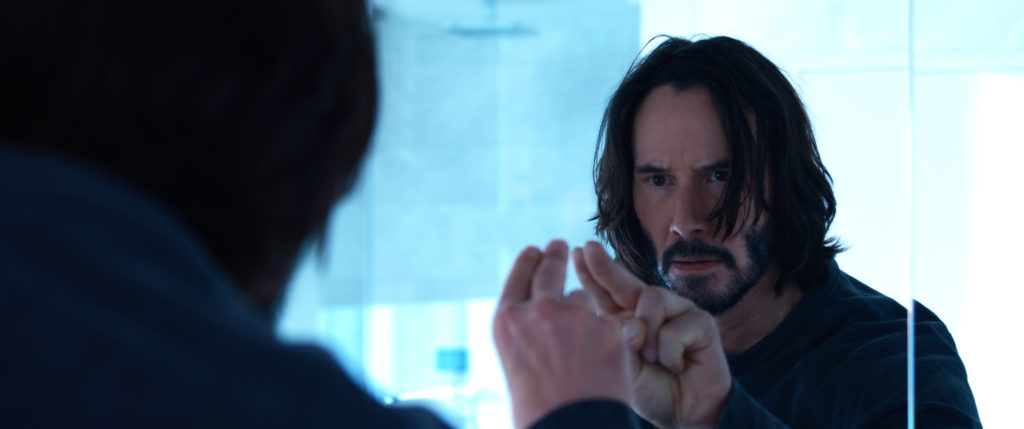
Helping him make those adjustments was a RED Ranger with Monstro sensor, Panavision Panaspeed lenses, and Zeiss zooms, and they found that “sometimes (when) you start rolling, you get an entire scene with only one click, basically.” In other words, the vaunted single take.
In addition to the embedded lights, and the consistently moving camera, the other difference Wachowski emphasised was in telling him to make a point of not looking at the first film. “This is a different story,” she told him. There was also the matter of film – and other – technology having changed in the meantime: “Originally,” he notes, “The Matrix was green,” since that was the colour of all those ‘90s-era computer pixels. “Now computers are not green anymore.”
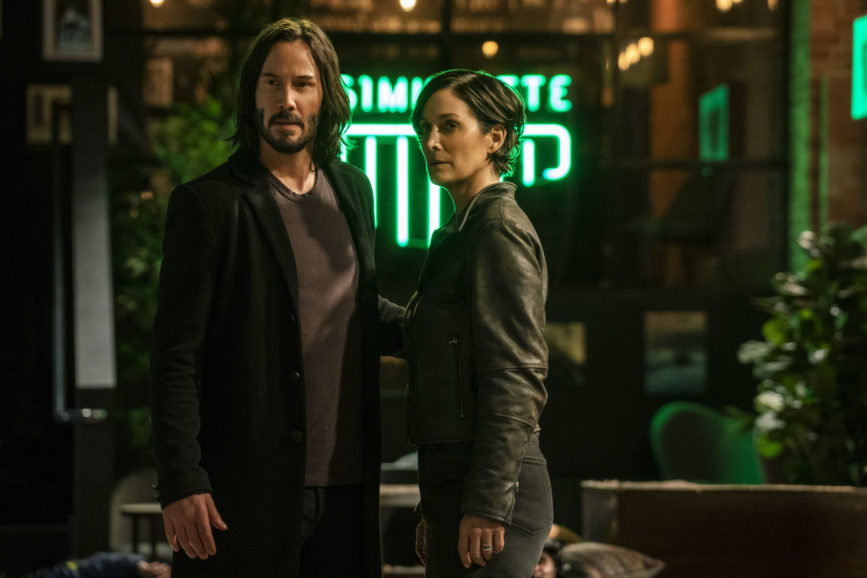
And while this may have led to reimagined Matrix-created (or induced) “realities” that looked “more real than the real reality,” there was another reason, connected to that same hue, “to use the Steadicam. (Wachowski) doesn’t like to green screen anymore. She’d rather do everything real, on set.”
Granted, this isn’t always possible in a story where buildings undulate, and people fly – and where sets in Berlin have to sometimes stand in for moving trains in Japan – but ingenious camera techniques were deployed more often than one might realise. In one sequence (minor spoilers ahead!), set in a motorcycle shop, three characters are moving at different speeds; Reeves’ Neo, Carrie Ann Moss’ Trinity, and Neil Patrick Harris’ new franchise arrival, The Analyst. One is essentially still, one is moving too slowly, almost painfully so, and one is very fast, to the detriment of the others.
To achieve this effect, they got “a 3-D rig, with one camera shooting eight frames a second (and) one shooting one hundred and twenty frames.” In the background, everything was “happening at normal speed,” but with each camera trained on a different moving character, each “had completely different looks,” or at least distinct timing, making it easier to “combine the different cameras” during the VFX stage.
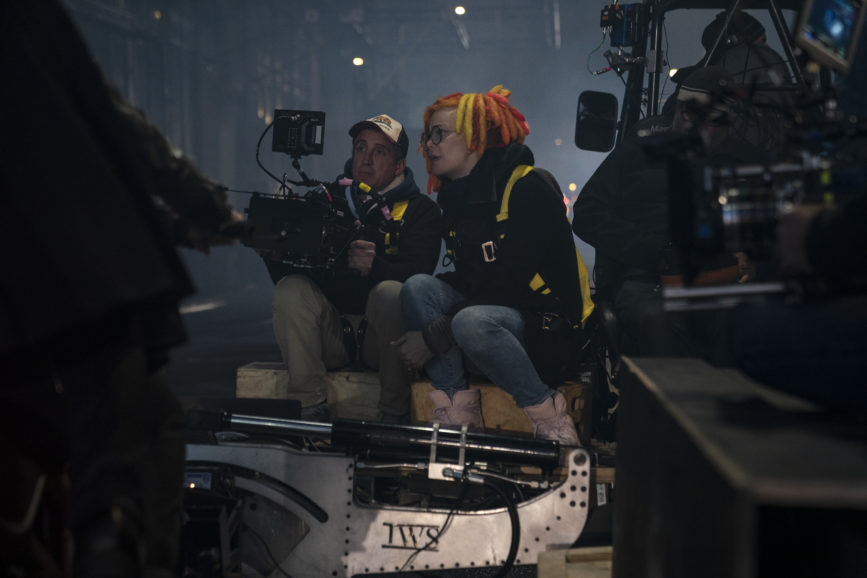
Even without shooting at different speeds, or with a rig, there were usually “two Steadicams on set,” a B camera in addition to the one Massaccesi operated, whose feed Wachowski could also view on the tablet on his back.
This proved such an efficient way to work that while the original schedule was for around 112 days of shooting, “we finished in eighty-eight days. Warner Brothers pulled the movie to release earlier” – though as it turns out, of course, during the Omicron outburst. But the decision was made well ahead of any COVID resurgence since it happened about halfway through production. The efficiencies of Wachowski and Massaccesi’s new way of filming were already apparent.
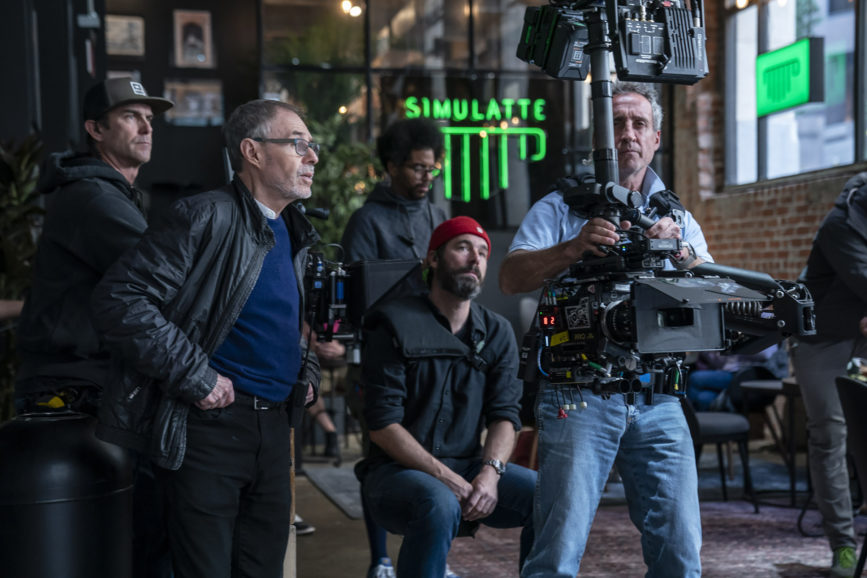
Meanwhile, he stayed in Berlin to do all the colour corrections for the whole movie at the ARRI facility there, after that, returning to his native Italy. Wachowski, he reports, was “very tired after she finished it,” not merely from following the DP/camera operator the whole time, but because she’d been involved with the project for close on to three years, ever since the idea for the fourth film had come up. “She was probably involved on this every single day,” in that time.
Back home, Massaccesi found “a lot of people waiting for the movie – everybody was asking me about it. Well, first of all, I couldn’t say, and second I didn’t want to spoil it.”
Of the experience, as a whole, being thrust into the DP’s slot, and developing Wachowski’s new modus operandi with her, he says “to be honest, it was fun.” Something (mild spoiler alert redux!) even Trinity and Neo’s characters, by film’s end, might agree with as well.
